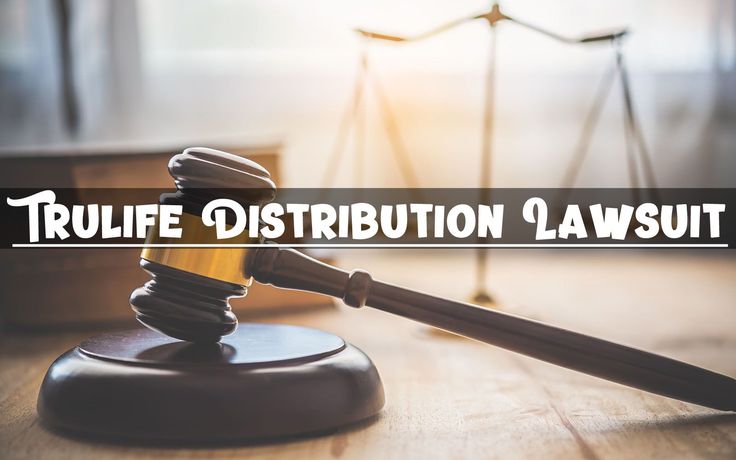In recent years, the name “Trulife distribution lawsuit” has been associated with a legal situation that has sparked significant public interest. The “Trulife Distribution lawsuit” touches on a range of legal, ethical, and business-related issues, leaving many to wonder what led to this case and its implications. This article delves into the details of the lawsuit, examining the background, the nature of the legal challenges, and how Trulife Distribution has responded. Our goal is to shed light on the topic, offering a balanced, well-rounded view of this high-profile case.
What Is Trulife Distribution?

Trulife distribution lawsuit is a company in the health and wellness sector. Their main focus is on helping brands distribute their products, often working as a bridge between manufacturers and retailers. With a wide variety of products and a client base ranging from small to large companies, Trulife has established itself as a key player in the distribution landscape. Known for its innovative approach to reaching consumers and helping businesses expand their reach, Trulife Distribution prides itself on its mission to foster successful partnerships.
Overview of the Trulife Distribution Lawsuit
The term “Trulife Distribution lawsuit” refers to legal action involving the company, where claims were made regarding certain business practices. Although the specifics vary across sources, the lawsuit generally centers on issues related to contractual obligations, business practices, or potentially misleading information. The claims raised in the lawsuit have brought attention to Trulife Distribution’s operations, sparking debates and discussions across the industry.
Key Elements of the Lawsuit
Some of the significant aspects commonly associated with the Trulife Distribution lawsuit include:
- Breach of Contract: Allegations that certain contractual agreements were not met.
- Misrepresentation: Claims that Trulife Distribution may have presented information in ways that were perceived as misleading.
- Business Ethics: Questions surrounding the ethical implications of Trulife’s operations.
How Did the Lawsuit Begin?
Understanding how the lawsuit originated requires looking at the company’s growth and interactions with its business partners. Trulife Distribution, known for ambitious strategies to push products to a larger audience, established numerous partnerships. As the business grew, the complexity of contracts and agreements increased, opening up room for potential misunderstandings or disputes.
Over time, some of Trulife Distribution’s business practices faced scrutiny, particularly concerning the details of its agreements and client expectations. When several clients or partners claimed dissatisfaction or felt misled, legal action became a course of resolution.
The Claims Made Against Trulife Distribution
Several claims were made against Trulife Distribution during the lawsuit. Below, we explore some of these claims in greater detail:
Breach of Contract Allegations
Many lawsuits involve a breach of contract when one party feels that the terms of an agreement have been violated. In the Trulife Distribution lawsuit, breach of contract was among the main accusations. Clients or partners might have felt that Trulife did not uphold specific commitments, whether regarding timelines, deliverables, or financial agreements.
Misrepresentation and Advertising Practices
Another aspect of the lawsuit involved accusations of misrepresentation. Some clients alleged that Trulife Distribution’s marketing and advertising tactics portrayed services or capabilities that were not entirely accurate. Misrepresentation claims can significantly affect a company’s reputation, as they imply that the information provided was not fully transparent.
Unfair Business Practices
Finally, the lawsuit highlighted questions regarding Trulife Distribution’s business ethics. In some cases, companies facing lawsuits may be accused of unfair business practices, where actions taken to gain a competitive edge are deemed unethical.
Trulife Distribution’s Response to the Lawsuit
Every company involved in a lawsuit has an opportunity to respond, and Trulife Distribution took steps to address the allegations. The company’s legal team worked to refute some claims while providing evidence to clarify the issues at hand. Their approach aimed to restore the company’s image and reassure clients and business partners.
Trulife Distribution’s official stance emphasized a commitment to transparent practices, explaining that any misunderstandings were unintentional and part of the learning process. The company also mentioned ongoing efforts to improve communication, adjust contractual terms, and ensure that future clients have a clear understanding of services.
Measures Taken by Trulife Distribution
In response to the lawsuit, Trulife Distribution implemented several initiatives:
- Enhanced Transparency: Providing clients with clear, easy-to-understand agreements.
- Improved Customer Support: Establishing a more responsive support system to address concerns.
- Ethical Training for Staff: Offering ethics training to employees to promote honesty in every client interaction.
Impact of the Lawsuit on Trulife Distribution
Any lawsuit has potential impacts on the parties involved, and the Trulife Distribution lawsuit is no exception. Below are some of the ways this legal challenge has affected the company:
Reputation
A lawsuit can impact public perception, and Trulife Distribution is no exception. While some people may view the lawsuit as a red flag, others see it as a call for companies to implement best practices in every aspect of their business. Trulife has since been focusing on rebuilding trust with clients and stakeholders.
Client Relationships
Maintaining strong relationships with clients is crucial for any distribution company. After the lawsuit, Trulife Distribution took steps to ensure that client satisfaction remains a priority, working closely with customers to guarantee a transparent and smooth experience.
Operational Changes
The lawsuit served as a learning experience for Trulife Distribution. The company reevaluated its contracts, policies, and interactions, working to prevent future misunderstandings. As part of this transformation, Trulife adopted a more streamlined approach to contracts and introduced additional training programs for its employees.
Table: Key Takeaways from the Trulife Distribution Lawsuit
AspectDetails
Primary Allegations Breach of contract, misrepresentation, unfair business practices
Trulife’s Response Implemented transparency measures, improved customer support, and provided ethics training for employees.
Impact on Reputation Mixed; led to increased scrutiny but also motivated Trulife to rebuild client trust.
Client Relationships Strengthened focus on transparency and client satisfaction.
Operational Changes Reevaluation of policies, streamlined contracts, and training programs
Lessons Learned from the Trulife Distribution Lawsuit
The Trulife Distribution lawsuit provides valuable lessons for businesses in similar industries. Whether you’re a small business owner, distributor, or client, understanding the importance of clear agreements, ethical practices, and transparent communication is crucial. The lawsuit underscores the need for businesses to maintain strong ethical standards and prioritize client satisfaction.
Importance of Clear Contracts
Having clear, straightforward contracts is essential for avoiding misunderstandings. The Trulife Distribution case highlights how vague terms or complex agreements can lead to disputes.
Ethical Business Practices
This lawsuit has also sparked discussions on ethical business practices. Operating with honesty and transparency is fundamental to building trust and maintaining a positive image in the industry.
Ongoing Communication with Clients
Maintaining consistent and open communication with clients can prevent many potential issues. By ensuring that clients have all the necessary information, companies can establish long-term partnerships built on mutual trust.
How Has the Industry Reacted?
The Trulife Distribution lawsuit has prompted discussions among industry experts. Many see it as a reminder for distribution companies to uphold strong ethical standards and maintain transparent practices. The case has highlighted the importance of accountability and led other companies to reexamine their approaches to contracts and advertising.
Industry Best Practices
Following the lawsuit, some industry leaders have suggested best practices for companies involved in distribution:
- Offer Clear Service Descriptions: Clients should fully understand the scope of services provided.
- Develop Transparent Pricing Models: Avoid hidden fees or unexpected costs.
- Ensure Customer Satisfaction: Make customer satisfaction a key metric for success.
- Conduct Regular Reviews: Review contracts and practices regularly to ensure they align with industry standards.
Moving Forward: The Future of Trulife Distribution
Despite the lawsuit, Trulife Distribution remains committed to moving forward and maintaining its role in the industry. The company has shown resilience by addressing the issues raised, implementing improvements, and reinforcing its commitment to ethical practices.
Positive Changes on the Horizon
The lawsuit catalyzed positive changes within Trulife Distribution. With an improved operational framework, enhanced client support, and a renewed focus on transparency, Trulife aims to rebuild trust and strengthen its partnerships.
Reinforcing Trulife Distribution’s Mission
Trulife Distribution has emphasized that its mission remains focused on helping brands succeed. By learning from this experience, Trulife is better positioned to fulfill its mission with integrity, aiming to be a trusted partner in the health and wellness distribution space.
Conclusion: Lessons from the Trulife Distribution Lawsuit
The “Trulife Distribution lawsuit” highlights both the challenges and the opportunities that companies face in today’s business environment. While lawsuits can impact a company’s reputation, they can also serve as opportunities for growth and improvement. Trulife Distribution is committed to adapting and learning, reinforcing its dedication to ethical practices and transparent client relationships.
For readers, the case serves as a reminder of the importance of clear contracts, ethical business practices, and the value of a strong reputation. Through transparency, honesty, and open communication, companies like Trulife Distribution can navigate challenges and emerge stronger on the other side.
Ultimately, the Trulife Distribution lawsuit is more than just a legal matter—it’s a powerful lesson in business ethics, client relationships, and the resilience needed to succeed in a competitive industry.




